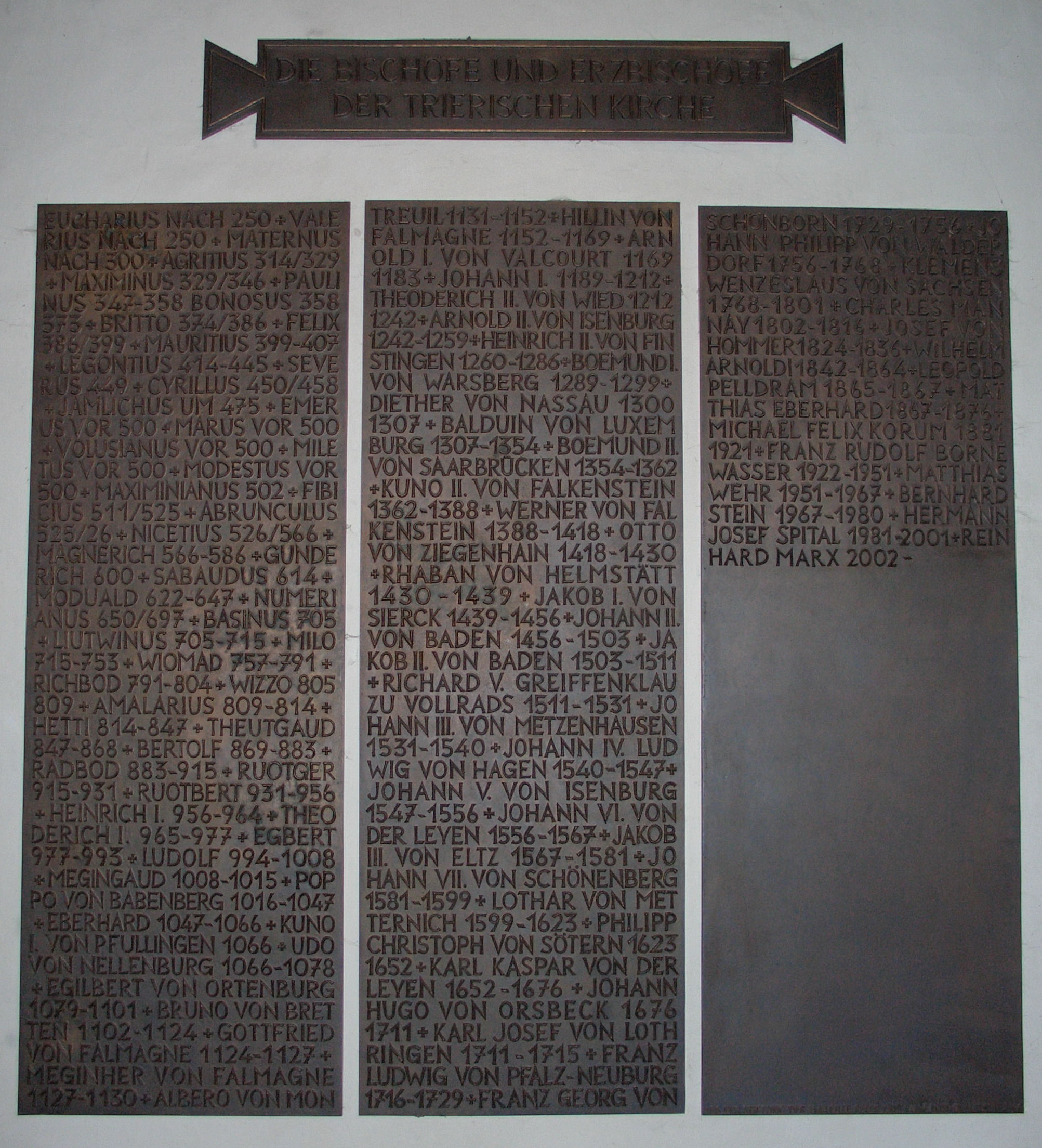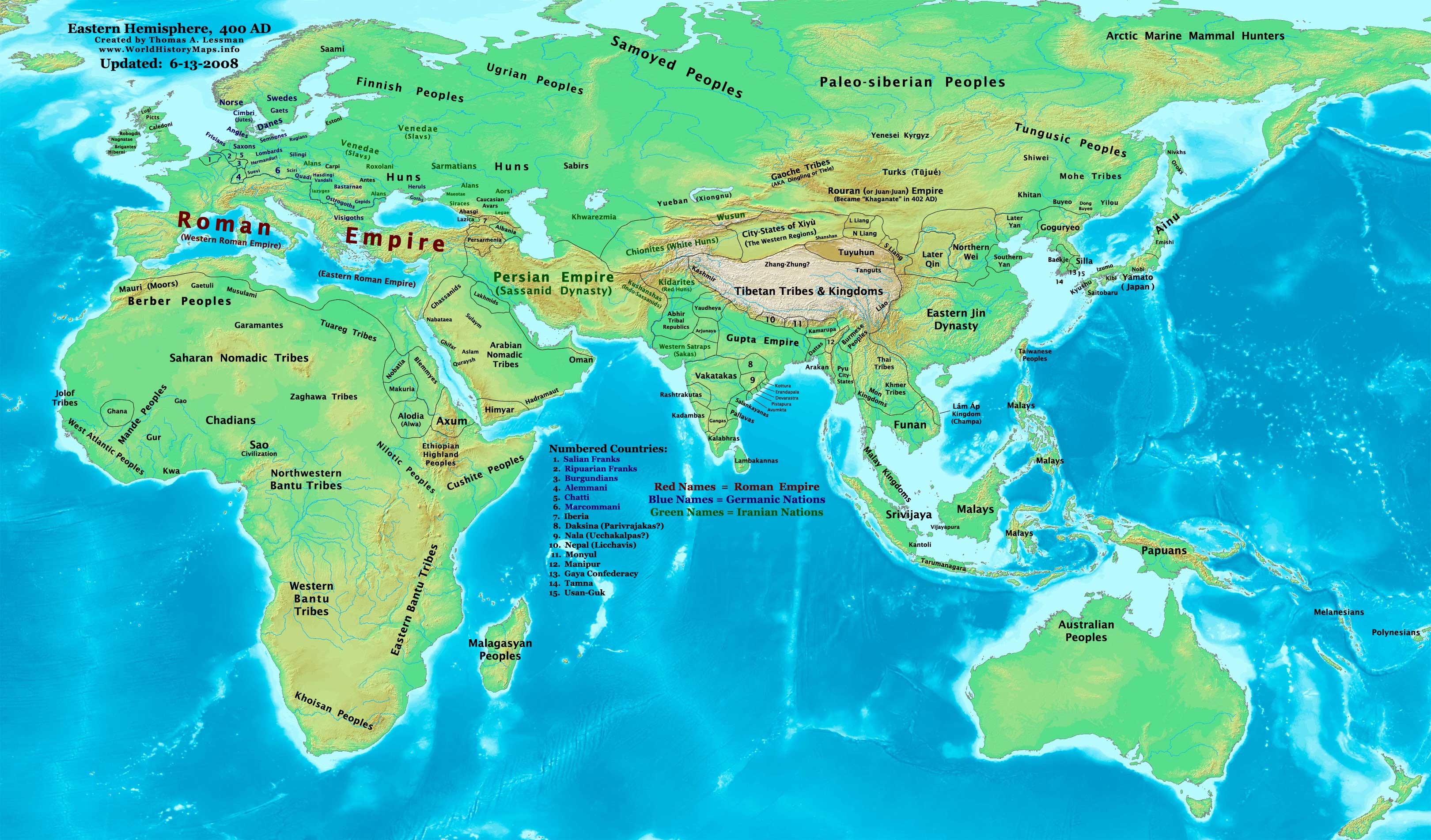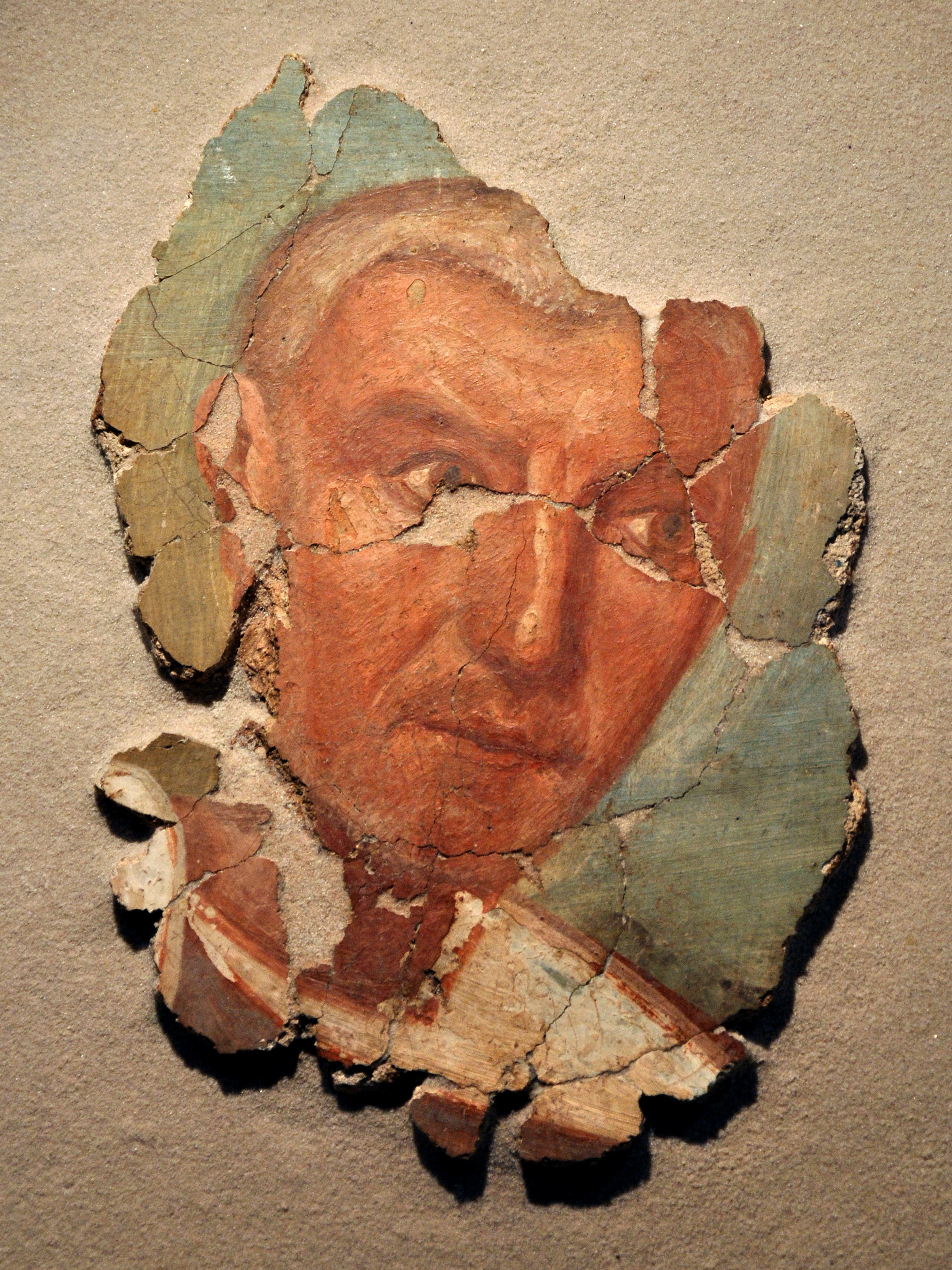|
Felix Of Trier
Felix of Trier ( fl. c. 386–399) was bishop of Trier from around 386 to 398. His episcopate was marked by the trial of Priscillian and his followers and their subsequent execution for heresy and witchcraft, which can be seen as the first inquisitorial action in the Church. The death sentences against Priscillian and his followers, despite the vigorous opposition of many bishops of the West, including celebrities such as Martin of Tours and Ambrose of Milan, were to have bitter consequences for Felix: Pope Siricius, Martin of Tours, Ambrose of Milan and other bishops broke off fellowship with all the bishops who took part in the trial of Priscillian. Felix was accused of not having campaigned vigorously enough against the verdict. At a Synod of Bishops in 398 at Turin all bishops were readmitted to communion with Rome, provided that they undertook to have nothing to do with Felix, who was thus largely isolated. In 398 he renounced his bishopric. Felix returned the relics of ... [...More Info...] [...Related Items...] OR: [Wikipedia] [Google] [Baidu] |
Feast Day
The calendar of saints is the traditional Christian method of organizing a liturgical year by associating each day with one or more saints and referring to the day as the feast day or feast of said saint. The word "feast" in this context does not mean "a large meal, typically a celebratory one", but instead "an annual religious celebration, a day dedicated to a particular saint". The system rose from the early Christian custom of commemorating each martyr annually on the date of their death, their birth into heaven, a date therefore referred to in Latin as the martyr's ''dies natalis'' ('day of birth'). In the Eastern Orthodox Church, a calendar of saints is called a ''Menologion''. "Menologion" may also mean a set of icons on which saints are depicted in the order of the dates of their feasts, often made in two panels. History As the number of recognized saints increased during Late Antiquity and the first half of the Middle Ages, eventually every day of the year had at l ... [...More Info...] [...Related Items...] OR: [Wikipedia] [Google] [Baidu] |
4th-century Bishops In Germania
The 4th century was the time period from 301 CE (represented by the Roman numerals CCCI) to 400 CE (CD) in accordance with the Julian calendar. In the West, the early part of the century was shaped by Constantine the Great, who became the first Roman emperor to adopt Christianity. Gaining sole reign of the empire, he is also noted for re-establishing a single imperial capital, choosing the site of ancient Byzantium in 330 (over the current capitals, which had effectively been changed by Diocletian's reforms to Milan in the West, and Nicomedeia in the East) to build the city soon called Nova Roma (New Rome); it was later renamed Constantinople in his honor. The last emperor to control both the eastern and western halves of the empire was Theodosius I. As the century progressed after his death, it became increasingly apparent that the empire had changed in many ways since the time of Augustus. The two-emperor system originally established by Diocletian in the previous century fel ... [...More Info...] [...Related Items...] OR: [Wikipedia] [Google] [Baidu] |
Year Of Birth Unknown
A year is a unit of time based on how long it takes the Earth to orbit the Sun. In scientific use, the tropical year (approximately 365 solar days, 5 hours, 48 minutes, 45 seconds) and the sidereal year (about 20 minutes longer) are more exact. The modern calendar year, as reckoned according to the Gregorian calendar, approximates the tropical year by using a system of leap years. The term 'year' is also used to indicate other periods of roughly similar duration, such as the lunar year (a roughly 354-day cycle of twelve of the Moon's phasessee lunar calendar), as well as periods loosely associated with the calendar or astronomical year, such as the seasonal year, the fiscal year, the academic year, etc. Due to the Earth's axial tilt, the course of a year sees the passing of the seasons, marked by changes in weather, the hours of daylight, and, consequently, vegetation and soil fertility. In temperate and subpolar regions around the planet, four seasons ar ... [...More Info...] [...Related Items...] OR: [Wikipedia] [Google] [Baidu] |
4th-century Christian Martyrs
The 4th century was the time period from 301 CE (represented by the Roman numerals CCCI) to 400 CE (CD) in accordance with the Julian calendar. In the West, the early part of the century was shaped by Constantine the Great, who became the first Roman emperor to adopt Christianity. Gaining sole reign of the empire, he is also noted for re-establishing a single imperial capital, choosing the site of ancient Byzantium in 330 (over the current capitals, which had effectively been changed by Diocletian's reforms to Milan in the West, and Nicomedeia in the East) to build the city soon called Nova Roma (New Rome); it was later renamed Constantinople in his honor. The last emperor to control both the eastern and western halves of the empire was Theodosius I. As the century progressed after his death, it became increasingly apparent that the empire had changed in many ways since the time of Augustus. The two-emperor system originally established by Diocletian in the previous century fel ... [...More Info...] [...Related Items...] OR: [Wikipedia] [Google] [Baidu] |
Saints Of Germania
In Christian belief, a saint is a person who is recognized as having an exceptional degree of holiness, likeness, or closeness to God. However, the use of the term ''saint'' depends on the context and denomination. In Anglican, Oriental Orthodox, and Lutheran doctrine, all of their faithful deceased in Heaven are considered to be saints, but a selected few are considered worthy of greater honor or emulation. Official ecclesiastical recognition, and veneration, is conferred on some denominational saints through the process of canonization in the Catholic Church or glorification in the Eastern Orthodox Church after their approval. In many Protestant denominations, and following from Pauline usage, ''saint'' refers broadly to any holy Christian, without special recognition or selection. While the English word ''saint'' (deriving from the Latin ) originated in Christianity, historians of religion tend to use the appellation "in a more general way to refer to the state of special h ... [...More Info...] [...Related Items...] OR: [Wikipedia] [Google] [Baidu] |
Gallo-Roman Saints
Gallo-Roman culture was a consequence of the Romanization of Gauls under the rule of the Roman Empire in Roman Gaul. It was characterized by the Gaulish adoption or adaptation of Roman culture, language, morals and way of life in a uniquely Gaulish context. The well-studied meld of cultures in Gaul gives historians a model against which to compare and contrast parallel developments of Romanization in other less-studied Roman provinces. ''Interpretatio romana'' offered Roman names for Gaulish deities such as the smith-god Gobannus; however, of the Celtic deities, only the horse-patroness Epona penetrated Romanized cultures beyond the confines of Gaul. The barbarian invasions began in the late 3rd century and forced upon Gallo-Roman culture fundamental changes in politics, economic underpinning and military organization. The Gothic settlement of 418 offered a double loyalty, as Western Roman authority disintegrated at Rome. The plight of the highly-Romanized governing cl ... [...More Info...] [...Related Items...] OR: [Wikipedia] [Google] [Baidu] |
Mauritius II Of Trier
Mauricius or Mauritius of Trier (floruit, fl. c. 398–407 or after 419) was bishop of Trier from 398/399 to at least 407, and possibly as late as 419.Hans Hubert Anton: ''Trier in the Middle Ages'' (Paderborn, Munich et al, 1987) p.81 Virtually nothing is known about the life of Bishop Mauricius. Following the resignation of Felix of Trier, Bishop Felix, he was elected bishop in 398/399. His episcopate coincided with a time of political upheaval. At the end of the 4th century the Roman city of Augusta Treverorum (today known as Trier) ceased to be a residence of the emperor and from 410 the area was invaded by the Germans. The significance of the church in Trier paled against this background, but it doubtless retained a local importance. Mauricius is held to be the recipient of a letter from Pope Boniface I concerning the church in Arles. It is unclear for how long Mauricius remained bishop: his successor may have been appointed in 407, or he may have been still in post in 4 ... [...More Info...] [...Related Items...] OR: [Wikipedia] [Google] [Baidu] |
Bishop Of Trier
The Diocese of Trier (), in English historically also known as ''Treves'' () from French ''Trèves'', is a Latin Church ecclesiastical territory or diocese of the Catholic church in Germany."Diocese of Trier" ''''. David M. Cheney. Retrieved February 29, 2016"Diocese of Trier" ''GCatholic.org''. Gabriel Chow. Retrieved February 29, 2016 When it was the archbishopric and |
Britto Of Trier
Britto of Trier ( fl. 374–386) was bishop of Trier. Biography Britto is first known from a meeting of the bishops of Gaul in 374, held at Valence on the Rhône. Britto claimed there that apostate Christians from the persecution under Emperor Julian (361-363) could return to church under certain conditions. He was also a representative of the Church of Gaul to the synod of Rome of 382, chaired by Pope Damasus I. This meeting addressed a letter to the bishops of the East. Britto was the third signatory after by Pope Damasus and Bishop Ambrosius. He was also at the court of the Roman emperor, Maximus, in Trier for the trial of Priscillian, who was accused of heresy and sorcery. It was here that he met Martin of Tours and Ambrose of Milan who had travelled to Trier and tried in vain to prevent the execution of Priscillian. Britto died 385 or 386. His grave is in St. Paulinus' Church, Trier. He is venerated as a saint in the diocese of Trier, where his feast day Th ... [...More Info...] [...Related Items...] OR: [Wikipedia] [Google] [Baidu] |
Trier
Trier ( , ; ), formerly and traditionally known in English as Trèves ( , ) and Triers (see also Names of Trier in different languages, names in other languages), is a city on the banks of the Moselle (river), Moselle in Germany. It lies in a valley between low vine-covered hills of red sandstone in the west of the state of Rhineland-Palatinate, near the border with Luxembourg and within the important Mosel (wine region), Moselle wine region. Founded by the Ancient Romans, Romans in the late 1st century BC as ''Augusta Treverorum'' ("The City of Augustus among the Treveri"), Trier is considered Germany's oldest city. It is also the oldest cathedral, seat of a bishop north of the Alps. Trier was one of the four capitals of the Roman Empire during the Tetrarchy period in the late 3rd and early 4th centuries. In the Middle Ages, the archbishop-elector of Trier was an important prince of the Church who controlled land from the French border to the Rhine. The archbishop-elector of Tr ... [...More Info...] [...Related Items...] OR: [Wikipedia] [Google] [Baidu] |
Floruit
''Floruit'' ( ; usually abbreviated fl. or occasionally flor.; from Latin for 'flourished') denotes a date or period during which a person was known to have been alive or active. In English, the unabbreviated word may also be used as a noun indicating the time when someone flourished. Etymology and use is the third-person singular perfect active indicative of the Latin verb ', ' "to bloom, flower, or flourish", from the noun ', ', "flower". Broadly, the term is employed in reference to the peak of activity for a person or movement. More specifically, it often is used in genealogy and historical writing when a person's birth or death dates are unknown, but some other evidence exists that indicates when they were alive. For example, if there are Will (law), wills Attestation clause, attested by John Jones in 1204 and 1229, as well as a record of his marriage in 1197, a record concerning him might be written as "John Jones (fl. 1197–1229)", even though Jones was born before ... [...More Info...] [...Related Items...] OR: [Wikipedia] [Google] [Baidu] |







